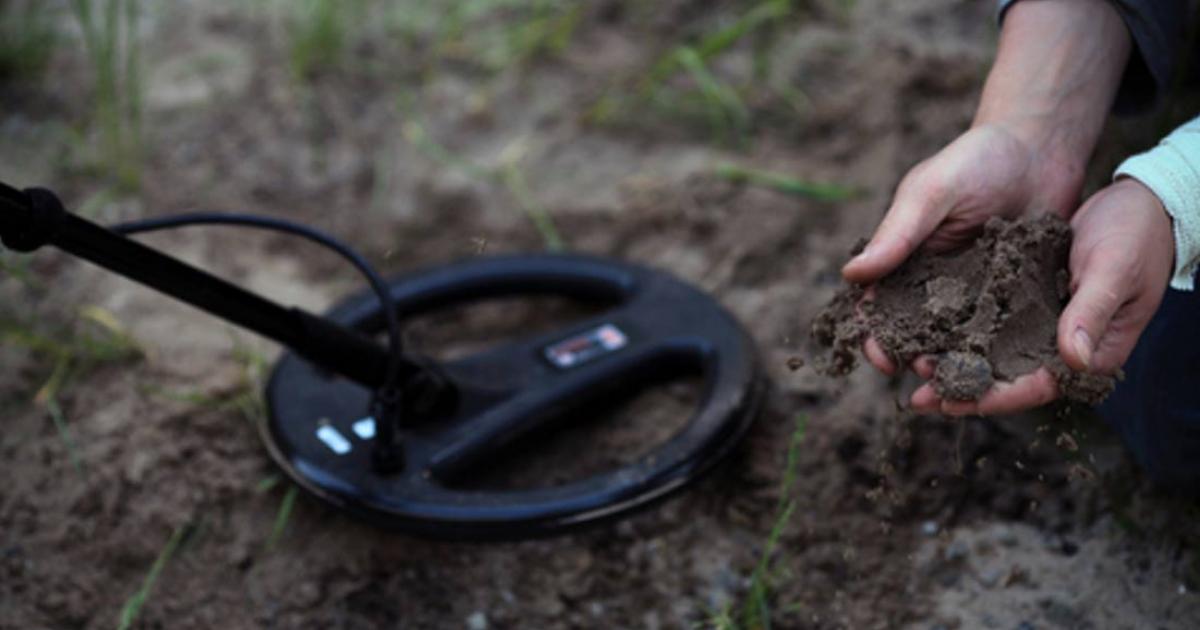
Metal detectorist uncovers Roman treasure hoard in England
A person with a metal detector uncovered some beautiful items of a Roman period burial from around 200 AD in a field in England north of London. An archaeologist says the items were likely owned by a wealthy person.
“Discovered late last year by a local metal detectorist in a field in Kelshall, a complete Roman jug was the first thing to be found,” says the North Hertfordshire District Council website. A bronze dish, a larger jug and then a third jug were soon uncovered. Realizing this was an important find it was reported and Keith Fitzpatrick-Matthews, North Hertfordshire District Council’s (NHDC) Archaeology and Outreach Officer, decided that it would be a good idea to investigate further.
“Once the dig was underway, glass bottles, an iron lamp and wall mounting bracket, two layers of hobnails from a pair of shoes and a box with bronze corner bindings were uncovered. Two shattered, but otherwise complete, mosaic glass dishes stood on top of a decayed wooden box which held two broken clear glass cups and a pair of blue glass handles. The largest glass bottle was hexagonal, and contained cremated bone and a worn bronze coin dating from AD 174-5. A rare octagonal bottle stood next to it. A major find was mosaic glass dishes likely made in Alexandria, Egypt, around AD 200.”
MORE
- Amazing Find with a Metal Detector - The Incredible Staffordshire Anglo-Saxon Gold Hoard
- Hoard of 5,000 Anglo Saxon coins worth over $1.5 million discovered by metal detectorists on Christmas dig
- Treasure hunter uncovers one of the most significant Viking hoards ever found in Scotland

This mosaic glass dish in the Louvre is similar, though a different color, from the one found recently near London. (Marie Lan-Nguyen/Wikimedia Commons)
The owner of the field, a farmer, and the metal detectorist own the items now, but the North Hertsfordshire Museum Service would like to buy the items for display in a new museum that will open later in 2015.
"After 1800 years, finds like these still impress us with their workmanship,” said Keith Fitzpatrick-Matthews, the North Hertfordshire District Council’s Archaeology and Outreach officer. “Working together with the metal detectorist, NHDC’s archaeologist and the Finds Liaison Officer, were able to uncover the past and find out and understand so much more about the lives of people in Roman North Herts.”
The Romans invaded the British Isles in 43 AD on order of Emperor Claudius. There was resistance to their occupation, particularly by Celtic Druids in Wales, says the website Historic UK. Other resistance came from the British chieftain Caractacus of the Catuvallauni tribe. He fled to Wales and rallied the locals but was captured in 51 AD. He was taken to Rome and appeared in a triumphal procession of Claudius. The Romans later released him in light of his courage, and he died in Rome.
MORE
- British Archaeologists Take on Treasure Hunters
- Hoard of 22,000 Roman coins is among largest collections found in Britain
For 10 years there was peace. Then Prasutagus of the Iceni tribe died and his wife, Queen Boudica, rebelled. Her two daughters had been raped and her lands taken by Romans. Allying with the Trinovantes tribes, she rebelled and burned Londinium (London), Camulodunum (Colchester) and Verulamium (St. Albans). The Romans wiped out her army on their way back from trying to quell the Druids in Anglesey.

Boudica leads the rebellion against the Romans in 61 AD. (Joseph Martin Kronheim painting/Wikimedia Commons)
The Romans conquered all the way to northeast Scotland. Then in 122 AD Emperor Hadrian ordered a wall built separating what are now England and Scotland. Another Roman wall was later built farther north, but eventually the boundary again became Hadrian’s Wall.

A part of Hadrian’s Wall in Northumberland (Jamesflomonosoff/Wikimedia Commons)
“The Romans never did succeed in subduing all of Britain,” says Historic UK. “They always had to maintain a significant military presence to control the threat from the unconquered tribes. But most people in southern Britain settled down to Roman order and discipline. Towns appeared for the first time across the country, including York, Chester, St. Albans, Bath, Lincoln, Gloucester and Colchester. All of these major centres are still linked today by the system of Roman military roads radiating from the great port of London such as Ermine Street, Watling Street and the Fosse Way. … [The] aristocracy may have increased status by adopting Roman ways and practices such as regular bathing. The vast majority of the populace would remain relatively untouched by Roman civilisation, living off the land and eking out a living.”
Featured image: The treasure-hunters. Working with a metal detector. Credit: Lamzin Vladimir / Dreamstime.
By Mark Miller















